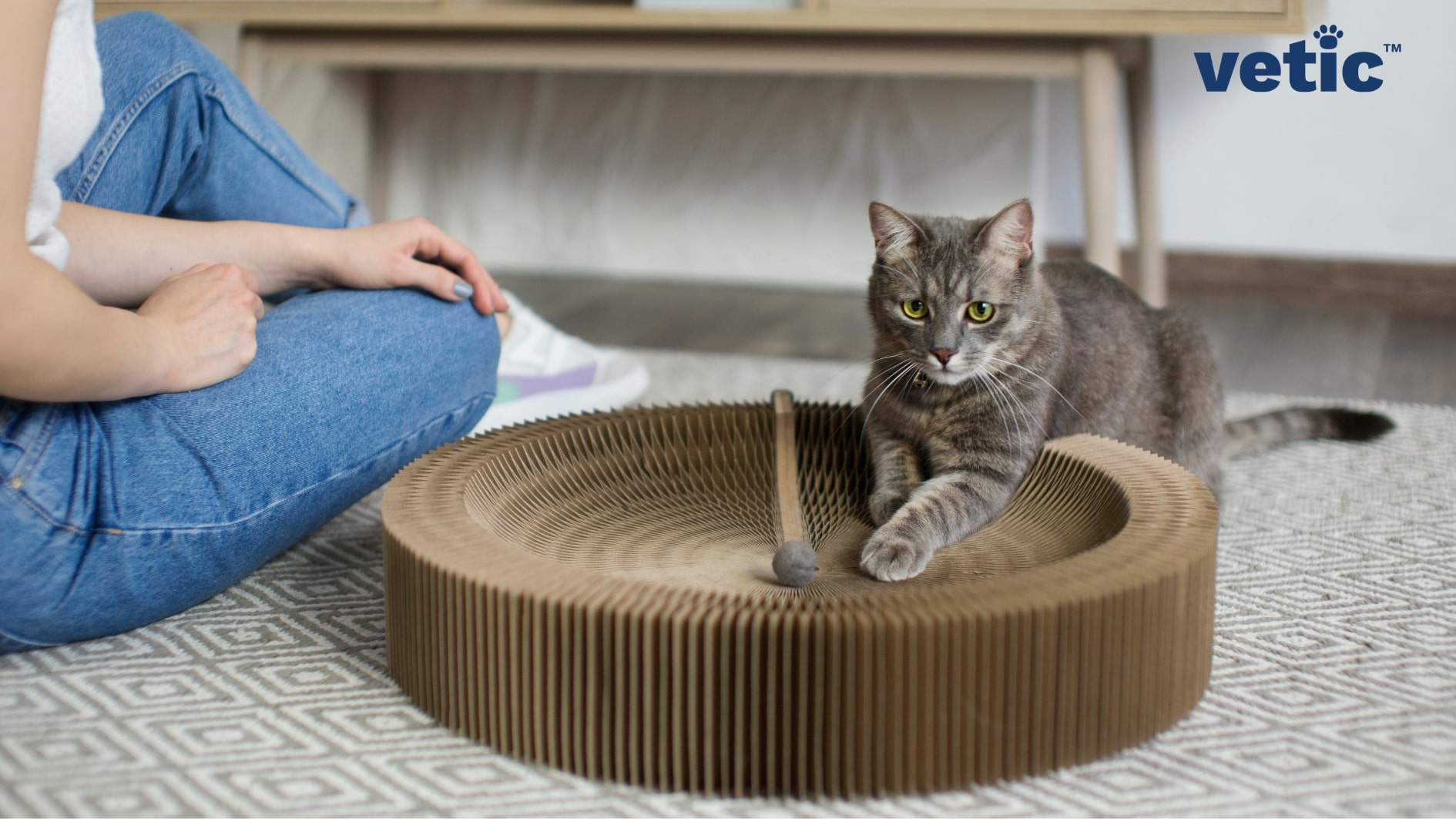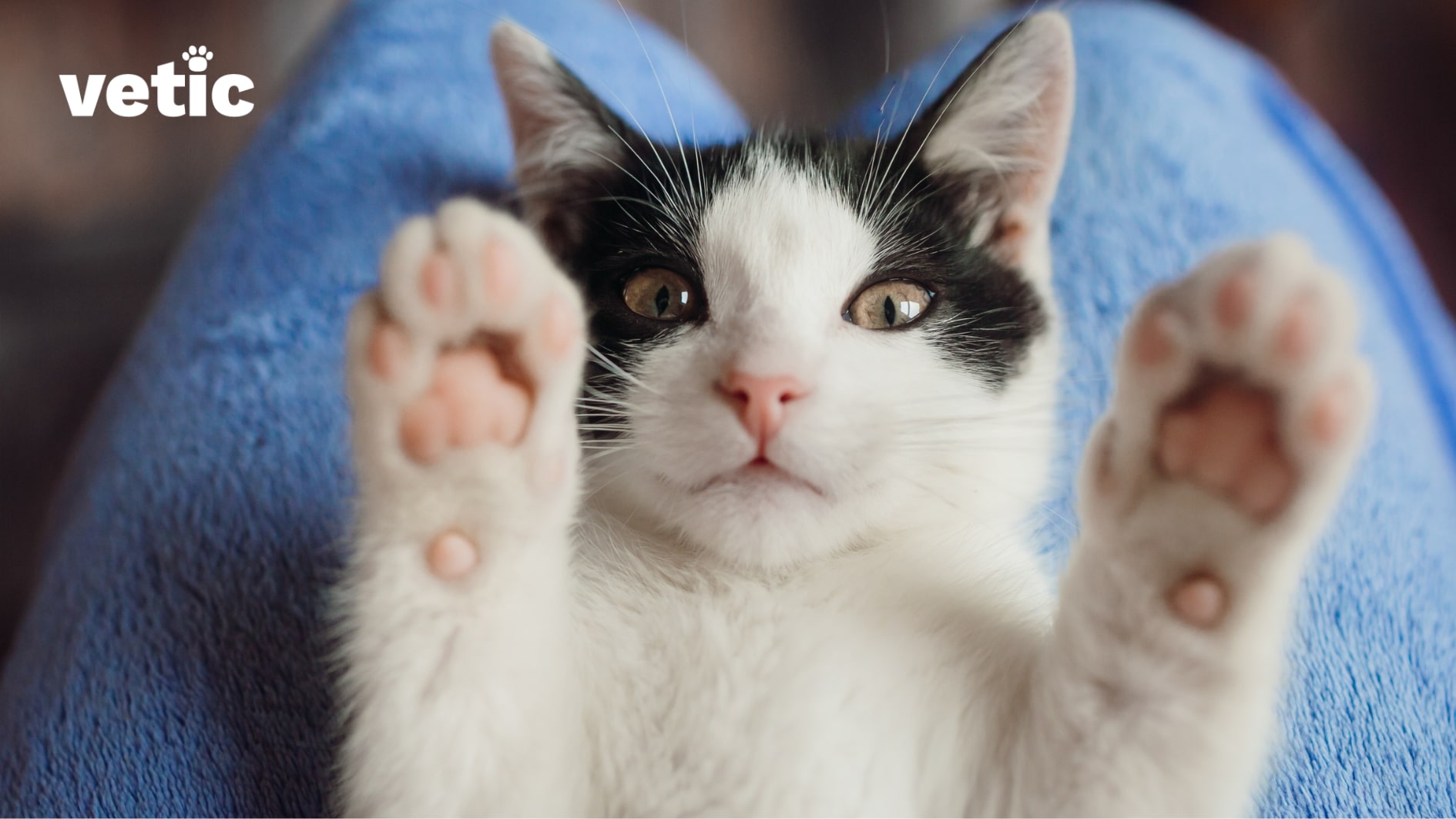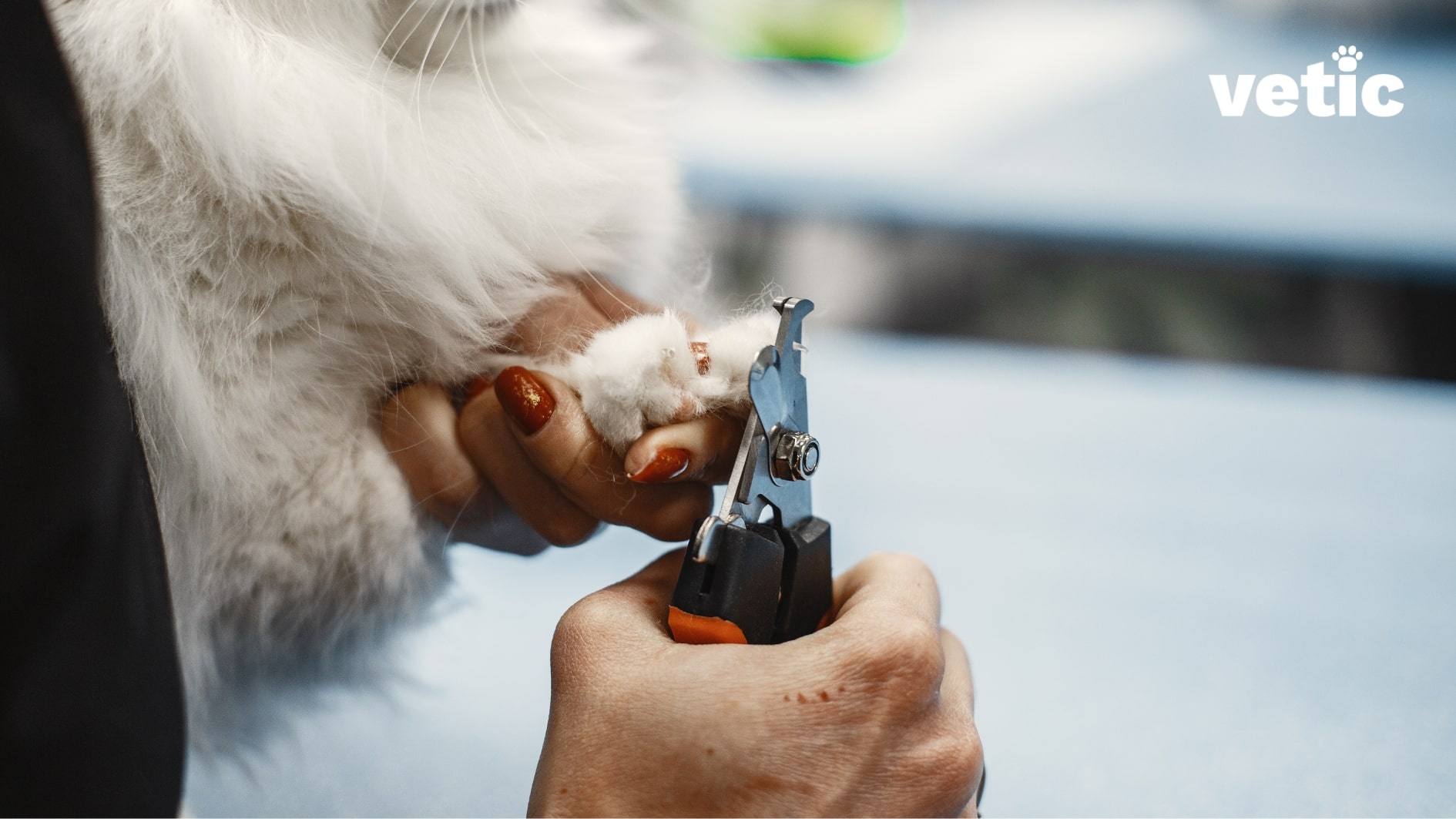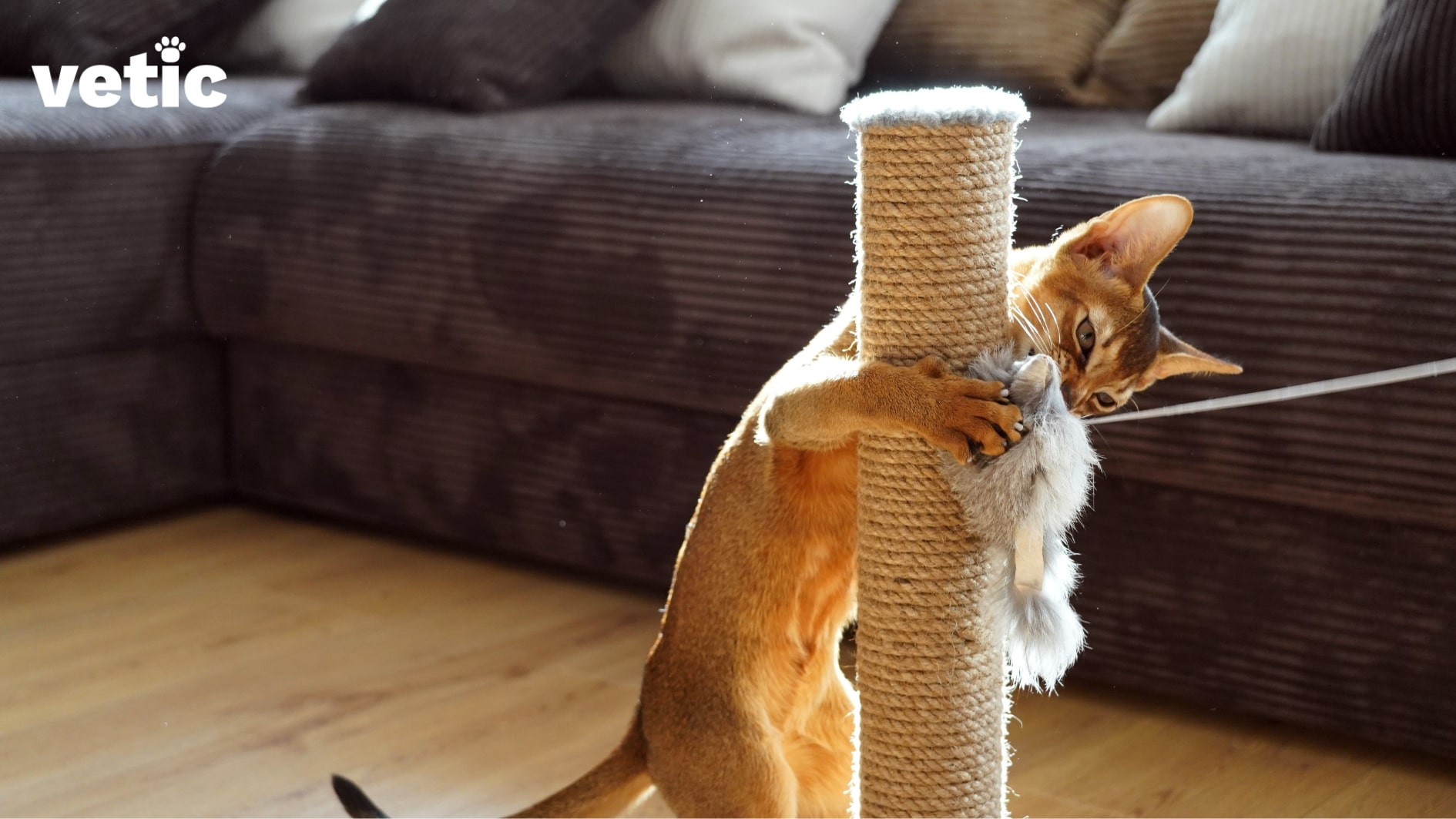All cat parents know the havoc cat claws can wreak on furniture, furnishings and human beings. Some are rightfully scared of handling their cat during vaccinations, deworming and giving medication. Many cat parents also ask if it’s alright to clip cat nails, or even declaw them.

To manage cat nails, we first need to understand their functions.
Why do cats need their claws?
Cats can use their claws for defending themselves, but cat nails are integral tools of survival for them.
Here are a few ways your cat uses their claws every day –
- Climbing
- Balancing
- Pouncing
- Scratching
- Turning
- Protecting themselves from other cats and dogs
So, declawing them, or removing the nail base completely from their paws is NOT a good idea.
How can you reduce the sharpness of your cat’s claws?
Have you noticed how your cat scratches the sofa, couch or carpet? That’s exactly how they reduce the sharpness of their claws and keep their nails healthy.
All you need to do is save your furniture and invest in scratch pads.
It is easy to get a kitten to use cat scratchers and scratch pads.
If you are trying to train an adult cat to use a cat scratcher, you can try to spray some catnip on the scratching surface.
Scratching is a natural instinct for all cats. As their nails keep growing, they need to shed the uppermost layers.
Outdoor cats typically scratch tree trunks to shed the top layer. So, indoor cats require some additional support from us in the form of cat scratch-boards and cat trees with scratching pads to keep their nails healthy.
Regular access to cat scratchers helps unsharpen cat claws as well.
Can you clip cat nails?
Of course you may clip your cat’s nails, if you can manage your cat. Clipping the nails of adult cats often result in injuries – to the cat and the handler.

The best way is to familiarise your cat with nail clippers since their kittenhood. Your kitten or cat needs to understand that clippers are not scary.
If your cat is afraid of clippers and nail clipping, it’s best to contact the best veterinary clinic with grooming services, near you.
How to clip cat nails?
If your cat is friendly and allows you to clip their nails, remember to stick to the translucent part only. Do not go anywhere near the quick.
The quick is the thick and opaque part of the nail. Clipping too close to it will cause bleeding and pain. We have seen several friendly cats becoming averse to nail clipping because the handler or groomer clipped their nails incorrectly causing them pain.
If you are unsure about your cat grooming skills, contact any veterinary clinic near you. The best veterinary clinics near you should have cat grooming services that offer nail clipping.
Why should you opt for professional cat grooming services?
Whether you have a kitten or cat, professional grooming services can make nail clipping significantly hassle-free for you and your pet. It can be considerably stress-free as well, if you choose the right place and groomers. Clipping your cat’s nails should never be unpleasant.

Pick a grooming service that employs trained and certified professionals. Professional groomers know to –
- Never rush nail clipping
- Judge your cat’s mood
- Not scold your cat or use force
- Not trim all the nails at one go (it can take up to an hour to trim all nails, depending on your cat’s temperament and mood)
Pick a grooming service that offers peaceful, comfortable and private space for cat grooming like Vetic does. Cat grooming spaces should always be separate from dog grooming spaces. Cats need to feel safe and secure when someone is grooming them.
Additionally, when you take your cat to the groomer, they know how to check for signs of fleas and mites. They will do a thorough inspection of their skin and coat as well.
How often should you clip cat nails?
Cat’s nails grow fast. Even faster than a dog’s nails. If your cat complies, you can clip their nails every fortnight.
It’s much easier to keep their nail growth in check by giving them multiple surfaces to scratch. Unlike dogs, cats’ nails do not come in contact with the floor when they walk or run. So, the only way is to clip their nails every 14 to 21 days to keep them short and less sharp.
At the same time, you can improve their nail health while at home. Try to invest in long-lasting cat scratchers. Purchase a variety of them – horizontal and vertical.
Scratching semi-soft surfaces such as coir and reinforced cardboard scratchers will clean your cat’s nails, get rid of the uppermost dead layers of the nails and keep the nail growth under control.
How can you stop your cat from scratching your furniture?

1. Give them a proper scratching surface
You can stop your cat from scratching furniture and shoes by giving them a scratch post they deserve! When they have enough space to play and scratch, they are likely to leave your couch and crocs alone.
2. Use scratch-deterrent sprays on surfaces
At the same time, you can use non-toxic lemon or orange scented sprays on objects you don’t want your cat to scratch. You can invest in commercially available scratch deterrent sprays as well.
3. Use both-sided sticky tapes on furniture they scratch
Another trick that works particularly well with indoor cats is using sticky tapes on surfaces you don’t want scratched. Cats don’t like sticky surfaces and they will likely avoid an area that feels sticky.
Cats do respond to positive reinforcement. However, you need to be patient. Sometimes, it takes between 2 and 4 months for cats to respond to your praises. You have to be patient. Yelling at cats only has negative effects on their behaviour. They are smart creatures and they will simply scratch furniture and slippers when you are not looking!
Always reward positive behaviour. Treats do count, but try to use a softer voice and praises whenever they use the right places to scratch.
